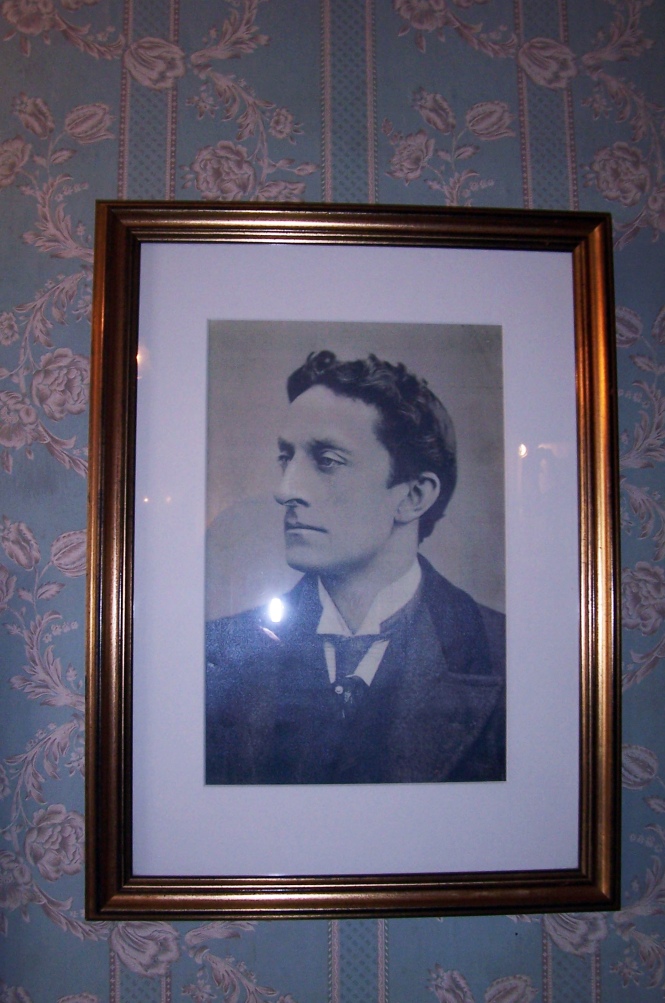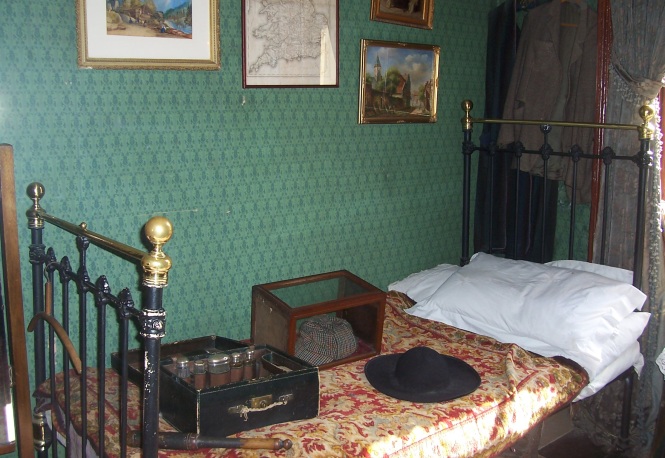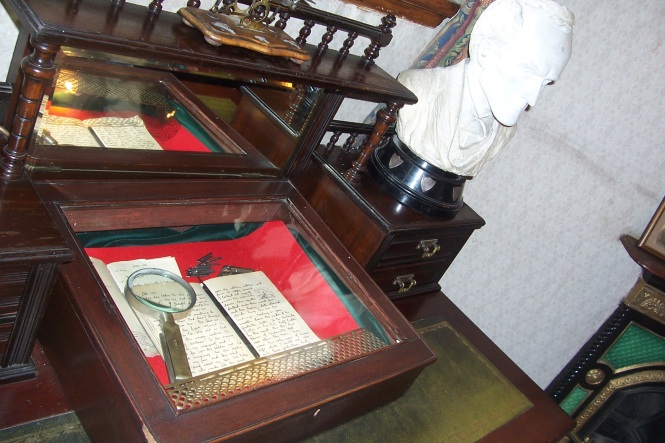You’ve been Irened
A year-end video for those who’ve been Sherlocked.
by
M
(Better in HD and full screen)
.
Trvia: The name “Irene” is derived from εἰρήνη—Greek for “peace”
The legend of Eirene: http://en.wikipedia.org/wiki/Eirene_(Greek_goddess)
.
From the Gipsy Geek archives: Elementary, Dr. Doyle.
.
About the usual incorrect portrayal of Miss Adler on film, a good analysis: Why can’t any recent Sherlock Holmes adaptation get Irene Adler right? http://io9.com/5972417/why-cant-any-recent-sherlock-holmes-adaptation-get-irene-adler-right
Why can’t any recent Sherlock Holmes adaptation get Irene Adler right?
– by Esther Inglis Arkell
Why is Arthur Conan Doyle’s Irene Adler so much better than the versions crafted by Steven Moffat and Guy Ritchie?
Note: Spoilers for the Guy Ritchie Sherlock Holmes movies, for the TV seriesSherlock, and obviously for the original Doyle stories.
Irene Adler is exceptional to modern audiences because she was exceptional to Holmes himself. He refers to her as “The Woman,” because to Holmes — described as a “chivalrous” misogynist in the novels — she transcended and “eclipsed” the rest of her sex. To us, she briefly eclipses Holmes, since she sees through him at one point in her story and fools him at another. Although she only features in one story, “A Scandal In Bohemia,” she is probably remembered by readers of the Sherlock Holmes adventures more than any other character except Watson and Moriarty.
It’s no wonder, then, that her character tends to be included in any modern Sherlock Holmes franchise. She’s appeared in Guy Ritchie’s Sherlock Holmes films, and she’s turned up in the episode of the Sherlock TV series entitled, “A Scandal in Belgravia.” Modern creators translate this exceptionalism into something more sensational and action-packed than Doyle ever wrote, but in most modern stories, Irene Adler’s character is far more old-fashioned than she was in Doyle’s day.
What’s the first tip-off scene, in both modern versions? When she takes off her clothes in front of Holmes to rattle him into making a mistake. This is very much in the “feminine wiles” vein, which looks great on camera, but doesn’t make too much sense. The original Irene was far more progressive and canny. She knows the best way to throw Holmes off — and it’s not sex.
To talk about that original Irene Adler, and how the modern versions differ, we need to summarize what happens during “A Scandal In Bohemia.” Holmes is contacted by the King of an unspecified country. The King is engaged to a woman who is politically perfect, but this is not his first engagement. His first engagement was to Irene Adler, a singer and actress. She managed to get a picture of them together during the happy times, before he dropped her for being “not of his station.” He fears that she will release the picture, scuttle the engagement, and bring turmoil to his country. Holmes needs to get that photograph back. Although the King is no prize, Adler is painted as a gold-digger and a dangerously scorned woman. Holmes dresses up as a clergyman and arranges a staged scuffle and a light injury so that she’ll bring him into her house to be treated. Watson fakes a fire, and Holmes watches as Adler, hearing the alarm, rushes to the hiding place of the photo. Holmes excuses himself, and goes home to organize a group of people to come to Irene’s house the next day and seize the photo. Just as he’s going into his home on Baker Street, a young man greets him in passing. Holmes nods, clearly confused, but dismisses the incident.
The next day, Holmes, Watson, and the King come to Adler’s door, where they find a servant who is expecting them. She hands them a note. The note reveals that Adler realized something was wrong with the disappearing clergyman the night before. She’d heard of Holmes, and made the obvious conclusion. To confirm it, she put on some men’s clothes, which she says she sometimes wears because she enjoys the freedom they give her, followed the “clergyman” home to Baker Street, and called Holmes’ name. She, and a man she has just recently married, decided to flee the King’s influence and leave the country. The note concludes with Adler saying that, as she loves and is loved by “a better man” than the King, she promises never to publicize the engagement. She will only keep the photograph in order to make sure the King never moves against her. Holmes apologizes to the King, but the King exclaims that Adler’s word is “inviolate,” and he’s perfectly satisfied.
“A Scandal in Bohemia” outlines the strong points that Irene Adler possesses as a character. She’s not the great detective that Holmes is, but she is able to assess a situation critically, notice what’s fishy about it, and act quickly. She’s also, thanks to her stage work, such a dab hand at disguises that the great advocate of observing instead of just seeing can’t recognize the face and voice of a woman he saw only an hour before. Throughout the story, she’s in command of the situation, initiating the threat to the King, finding a man she loves better, marrying him, and heading out of the country when she wants to break off the game with Holmes and his royal client.
The story also shows how Irene and Sherlock have an intellectual kinship. They’ve both unmasked a fraud (the King, at first, came to Holmes in disguise), they both know a set-up when they see it, and they both have a flair for dramatic disguises. What’s more, the story exposes Holmes’ weakness as a detective — he tends to assume the worst of people. This is also shown off in his greatest failure, “The Adventure of the Yellow Face,” where he gets the solution to a case entirely wrong because he didn’t figure on dealing with honorable people.
And that’s the big twist in the Irene Adler case — that she’s a completely honorable person. Even the King, who has every reason to fear her, has complete faith in her decent nature once she’s promised to him that she won’t interfere with his life. This is what launches Doyle’s story well ahead of its time. Much is made of Adler outwitting Holmes, and that’s fair enough. What’s more impressive is Doyle showing that unconventional habits, self-determination, and a history of impressive romantic conquests — Doyle makes a point of mentioning that Irene Adler enchants just about every man in sight — are just that. They do not imply low character, criminal tendencies, or inferior intellect. They aren’t the tools of a gold digger or an opportunistic seductress who’s waiting to unleash her apparently lethal sexuality on the hero. A clever, unconventional, take-charge, and seductive woman is, unreservedly, a good thing.
Not so in the modern day Sherlocks. In both media series, Irene Adler is not simply an admirable person with a taste for sleuthery and adventure. In the movie series, she’s both a woman who marries rich men for a living and a thief — though why she’d need both professions is never made clear. In the TV series, she’s a dominatrix who dabbles in blackmail and international terrorist intrigue (on the side of the terrorists). Both characters lean very heavily on sexuality and criminality. Both characters aim their sexuality squarely at the hero, to their inevitable cost.
And both modern Irene Adlers have an even bigger strike against them. While the original Adler was independent, they’re both pawns of Moriarty. The movie Adler is a sort of cross between a messenger girl and sexual bait for Holmes. The TV Adler is part of a convoluted deal to reveal state secrets to terrorists and then blackmail the British government into paying her to keep all the other information she has gathered under wraps. It makes her sound evil, but smart and in command — until in her final villainous speech, she reveals that she didn’t know what to do with the information she had, or how to deal with Holmes, until Moriarty told her.
It’s certainly possible to sympathize with modern Holmesians. A virtuous, happily married lady who walks out of Holmes’ life the moment she recognizes him is hard to weave into a web of intrigue. And it’s understandable that Adler is a tough third ally to add to the narrative when the goal of a series is to focus on the team of Holmes and Watson going up against the world’s greatest criminal genius. But surely a female master of disguise who can fool the most brilliant detective of the time and switch her apparent gender at will could be of use in a narrative. In the second Holmes movie, the climax of the film revolves around Team Holmes trying to uncover a perfectly disguised man. Doyle’s Irene Adler could have been perfect to slot in there. As for Sherlock, it’s early on, but is the best use of Adler as a woman with a hopeless crush on Holmes, especially considering they already have one of those in the series?
It’s true that Doyle’s version of Adler isn’t entirely modern. There’s no doubt that he uses her marriage to signify that she’s safely sorted out, as far as liaisons with men are concerned. And the use of male drag on women, though probably unusual in everyday life, is not a new thing in literature. That easily dates back to the plucky heroines of Shakespeare’s time. But the modern Irene Adlers are morally bankrupt puppets deploying their sexual wiles to lead men into the power of an infernal master – and are justly punished for it. That goes all the way back to Eve. These are deeply, deeply old-fashioned women in deeply old-fashioned stories. Letting them throw a punch or carry a whip doesn’t update that archetype. It takes something stronger. But why bother with that when Irene Adler can get naked on camera, bat her eyes at Sherlock Holmes, and be rescued at the end?”
.
.










